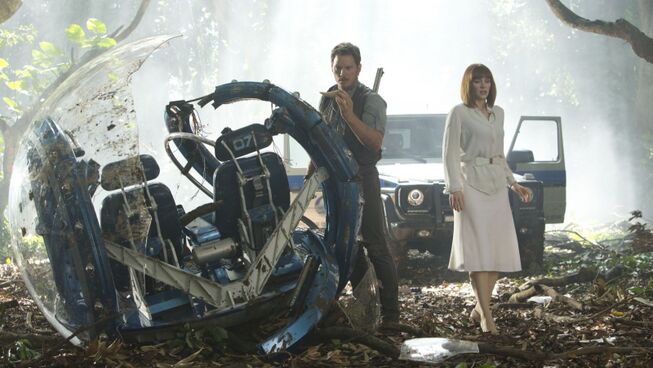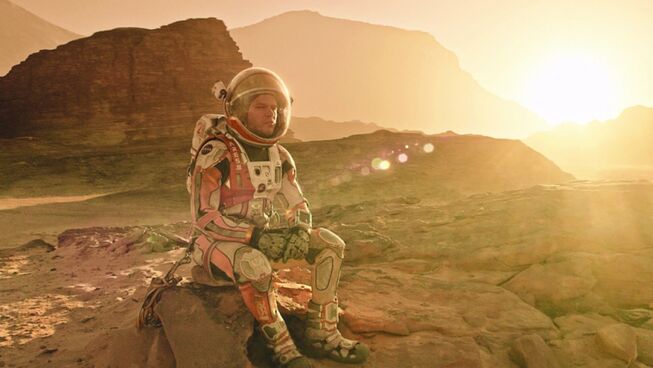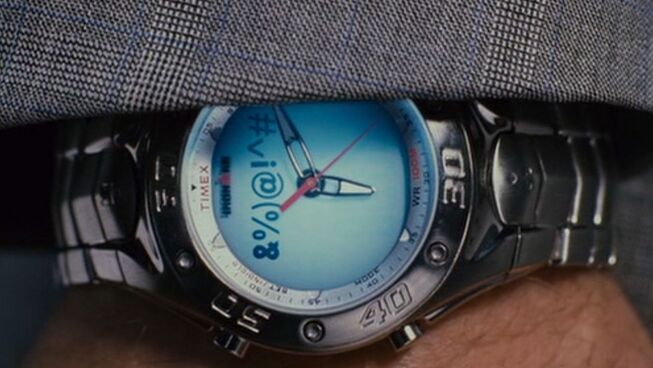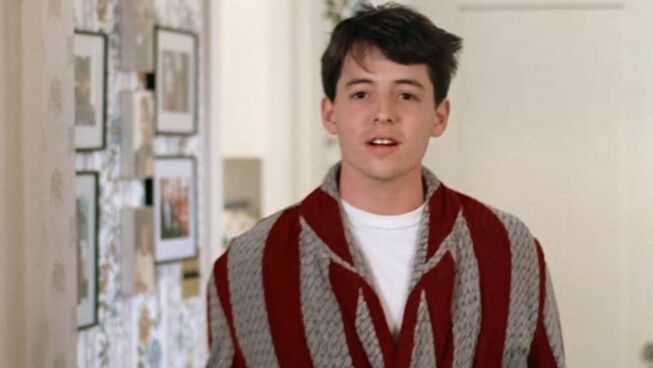
4 out of 5 stars
The original Jurassic Park (1993) is considered a classic, but the sequels were forgettable. 22 years on, the fourth dinosaur blockbuster — Jurassic World — is here. See if you have heard this story before: scientists make a new creation out of things they have unearthed from the ground. These new creations seem good at first, but begin to turn from the power of their master and towards terrorising the local community. Most of the people run away from these monsters, but the hero stays and either will save or destroy the monsters.
Sound familiar?
Throughout literary and cinematic history, from Frankenstein to Jurassic Park, humankind has been running from what it has created. Jurassic World stays within the monstrous tradition, as it allows us to visit the fully-functioning dinosaur theme park that was promised by the first Jurassic movie. The vision of John Hammond has come to fruition on the island of Isla Nublar, but there is trouble in this Jurassic paradise. The park has been in operation for ten years and attendance is declining. The corporation who oversees the park wants to develop dinosaurs that have the “wow” factor. In creating bigger and “badder” dinosaurs, what could possibly go wrong?
The biggest question to be asked of Jurassic World must be: “what does it provide that you cannot get from the original?” The answer: Bigger villains, more teeth and Chris Pratt (Guardians of the Galaxy). Understandably, technology has also changed during the past two decades and the special effects are pretty incredible. But the value added comes down to the terror factor of the new dino-villain, Indominus Rex, and the appeal of the hero, Owen (Pratt). Both of these distinctions deliver something new that is worth watching.
Jurassic World could never match the originality of Jurassic Park, but it delivers the fear factor expected when coming to a Spielberg-inspired creation. The adaptive villain provide the necessary terror, capably assisted by the multitude of new dinosaurs.
With the inclusion of heroic central character Owen, there is now an Indiana Jones-type foe for the genetically-enhanced dinosaurs to battle. Pratt manages this role well and provides the cockiness and humour needed for such a popcorn adventure. Bryce Dallas Howard (The Help), Irrfan Khan (Life of Pi), BD Wong (Focus) and Vincent D’Onofrio (Men in Black) provide all of the usual supporting characters that offer such stories depth (as well as, ultimately, building the bridge for the inevitable sequel). Jurassic World won’t go down as a cinematic triumph, but director Colin Trevorrow (Safety Not Guaranteed) provides enough new ingredients — and includes the nostalgic touches — to make you want to come along for the ride. The ending is completely unbelievable, but go back to the bit about how we are dealing again with a story about a Disney Dino-world. So, suspend all disbelief and hold on for an entertaining visual experience.
Similar to this year’s Ex-Machina, Jurassic World opens the perpetual discussion about humankind tinkering with the original creation. Striving for new scientific breakthroughs should be encouraged, but the bigger considerations could be in relationship to the original plan for this world. In a story such as Jurassic World, making subtle changes to the original creation seems to lead to disastrous conclusions. The precise nature of this world seems to leave little to randomness. So, if that is the case, should there be more consideration of an ultimate designer being behind it all? Take time to think about it and maybe even read up on it. In the mean time, allow yourself to go have some fun at the cinemas with Jurassic World.
Leaving the cinema…
Jurassic World had enough “wow” factor to justify it bringing the Jurassic Park franchise back from extinction. It was unbelievable, but enjoyable.
What are the bigger questions to consider from this film?
1. What can we know about creation? (Genesis 1-3)
2. Can we solve our own problems? (Proverbs 3:5, Philippians 4:6)
3. Why do we need a saviour? (Romans 3:10-18, Romans 6:23)






